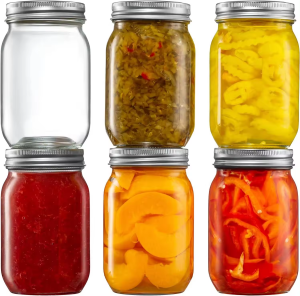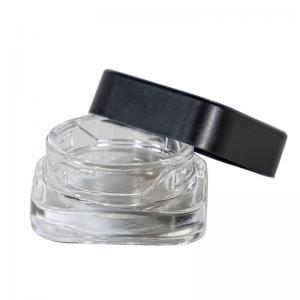Согласно недавнему отчету Национального института по борьбе со злоупотреблением наркотиками (NIDA), женщины в возрасте от 19 до 30 лет впервые сообщили о более высоких показателях употребления марихуаны, чем мужчины, в то время как среди потребителей старшего возраста по-прежнему преобладают мужчины. Кроме того, уровень использования электронных сигарет с никотином и марихуаной среди людей в возрасте от 19 до 30 лет находится на историческом максимуме (уровень использования в прошлом году составил 25% и 22% соответственно), при этом основными причинами являются стресс, тревога и проблемы психического здоровья. причины, на которые ссылаются женщины-потребители. По данным Reuters, компании по производству каннабиса в США меняют направление разработки своей продукции, чтобы адаптироваться к этим изменениям в группах потребителей. Лорен Карпентер, генеральный директор аптечной сети Embarc, подчеркнула, что женщины принимают более 80% решений о покупках в штате, что делает эту трансформацию не только разумной, но и решающей для отрасли. Женщины теперь составляют 55% пользователей приложения cannabis Jointly, а в некоторых случаях даже превосходят мужчин. Например, в сентябре покупатели-женщины потратили в среднем 91 доллар в первой легальной аптеке Нью-Йорка, а покупатели-мужчины потратили 89 долларов.
Чтобы извлечь выгоду из этой тенденции, такие компании, как Embarc, концентрируются на разработке продуктов и продвижении брендов, подходящих для женщин, чья потребительская способность даже выше, чем у мужчин. Продолжающаяся легализация марихуаны и социальный когнитивный прогресс будут стимулировать эту тенденцию: женщины чаще, чем мужчины, будут совершать покупки на легальном рынке. Крупные компании по производству каннабиса, такие как Tilray и High Tide, увеличивают свои инвестиции в продукты, которые нравятся женщинам. Tilray, лидер на рынке напитков из каннабиса, добился успеха в таких продуктах, как чай со льдом с лимоном, а недавнее приобретение компанией High Tide компании Queen of Bud подчеркивает ее ориентацию на THC(тетрагидроканнабинол) продукты для женщин. Недавно был опубликован опрос, проведенный среди взрослых американцев о намерениях употребления марихуаны и источниках информации. Среди 1161 участника 27% сообщили об употреблении марихуаны в прошлом году, при этом наиболее распространенными источниками информации о продукте являются друзья/семья -35,6% веб-сайты -33,7% медицинские работники -9,3% продавцы в магазинах -8,6% государственные учреждения -4,7%. Однако среди потребителей марихуаны в медицинских целях (независимо от того, используют ли они ее для развлечения или нет) только 16,4% получили информацию о продукте от медицинских работников.
Исследователи из Медицинской школы Мичиганского университета пришли к выводу, что «с ростом доступности и изменением легальности марихуаны существует острая необходимость в улучшении клинического образования, улучшении пропаганды общественного здравоохранения и улучшении взаимодействия между пациентами и клиническими врачами по вопросам терапии марихуаной. " Исследование было опубликовано в журнале Journal of Cannabis Research. Пол Арментано, заместитель директора NormL, прокомментировал результаты опроса: «Исторически источники, связанные с правительством, либо скрывали марихуану и ее действие, либо просто лгали. Поэтому неудивительно, что общественность не считает их надежными. источники информации, связанной с марихуаной». Г-н Арментано также сказал, что большинству медицинских работников не хватает достаточной подготовки по вопросам, связанным с марихуаной.
Другое исследование, проведенное среди студентов сестринской практики (NP), показало, что 97% людей считают, что обучение каннабису должно быть включено в курсы NP. Но только 30% людей сообщили, что получили углубленное образование по этой теме, а исследователи из Школы медсестер Университета Симмонса в Бостоне, штат Массачусетс, заявили, что программы НП должны оценить свою текущую учебную программу и представить контент для устранения пробелов в знаниях относительно механизмов действия. , показания и побочные реакции медицинской марихуаны. Что касается розничной торговли, разрыв в образовании все еще может существовать. Исследование, опубликованное в 2022 году, показывает, что аптеки часто принимают решения о приеме на работу, основываясь больше на способностях кандидатов к продажам, а не на их знаниях о терапевтическом использовании марихуаны. В Соединенных Штатах просвещение по вопросам каннабиса стало более актуальным вопросом, особенно если будет решено перевести его в менее ограниченную категорию Приложения III, продукты каннабиса выйдут на рынок в больших масштабах, и популяризация знаний, связанных с каннабисом, является актуальной.


 русский
русский English
English français
français Deutsch
Deutsch italiano
italiano español
español português
português Nederlands
Nederlands 日本語
日本語 한국의
한국의











 2024-12-31
2024-12-31
 Онлайн -сервис
Онлайн -сервис


